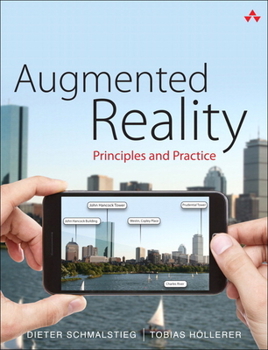Augmented Reality: Principles and Practice
Today's Comprehensive and Authoritative Guide to Augmented Reality
By overlaying computer-generated information on the real world, augmented reality (AR) amplifies human perception and cognition in remarkable ways. Working in this fast-growing field requires knowledge of multiple disciplines, including computer vision, computer graphics, and human-computer interaction. Augmented Reality: Principles and Practice integrates all this knowledge into a single-source reference, presenting today's most significant work with scrupulous accuracy. Pioneering researchers Dieter Schmalstieg and Tobias H llerer carefully balance principles and practice, illuminating AR from technical, methodological, and user perspectives.
Coverage includes
Displays: head-mounted, handheld, projective, auditory, and haptic Tracking/sensing, including physical principles, sensor fusion, and real-time computer vision Calibration/registration, ensuring repeatable, accurate, coherent behavior Seamless blending of real and virtual objects Visualization to enhance intuitive understanding Interaction-from situated browsing to full 3D interaction Modeling new geometric content Authoring AR presentations and databases Architecting AR systems with real-time, multimedia, and distributed elementsThis guide is indispensable for anyone interested in AR, including developers, engineers, students, instructors, researchers, and serious hobbyists.





